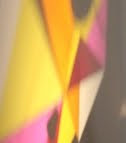when lambs grew on trees...

the colophon was a beautiful journal published in the 1930's, where every few pages were designed and printed by a different press. i should really do a post on the design of these things as they are gorgeous and highlight a kind tactile approach to printing and binding that is losing steam fast. volume 10 features a lot of visual and textual pleasures running from the ward ritchie press and robinson jeffers, to articles on punch cutting and a written description (of several pages in length) of the beowolf codex. the real discovery though is "the scythian wonder (or the vegetal lamb of tartary".
During the middle ages, there was thought to be a kind of plant with gourds, "which when being ripe, doe open at the tops, and within them is found a little beast like unto a yong lambs". sir john mandeville's journal describes not only seeing the little lambs in gourds but also eating them: "of their frute i have eten: alle thoughe it were wonderfulle: but that i know welle but god is marveyllous in his werkes." (while mandeville's manuscript does exist, mandeville the person may or may not have existed).
the legend of the lambs continues into the 17th century, mostly connected to a reference in the talmud of jerusalem dated 436, where the lamb was described "not as lying in either blossom or seed pod, it was, though living, fixed upon a flexible stalk protruding from the ground. as it hung limply thereon, it cropped as much of the surrounding grass as it could reach, dying when all this had been consumed. it was difficult to kill or capture; but its death could be brought about by piercing its stalk with an arrow". in the talmud the legend grows, as supposedly if a would be prophet could obtain the bones of the lamb and put them in his mouth, he could see the future.
with the invention of printing, the lamb made its way into the notes of botanists, historians, and poets alike; with conflicting descriptions. by the 15th century the stalk or root version of the lamb overtook the gourd version, and the scythian wonder became a small lamb covered in wool attached to a hard stalk or root just above the ground.
the page above with the detail of the lamb is from john parkinson's paradisi in sole from 1629. in this text parkinson (an apothecary and herbalist) speaks mostly of gardening; but the woodcut, presented on the title page, is of the garden of eden and clearly shows the lamb. 11 years later he published theatrum boticanum, which also pictured the lamb and includes a lengthy description of the lamb; saying that after the lamb has consumed the grass it can reach, it "dyeth", and thus "the wolves much affect to feed on them".
of course, skeptics were everywhere, and in 1698 sir hans sloane submitted to the royal society a fern root shaped like a little animal, suggesting that such things seen during walks or from horses were the basis of the legend. the last theory to debunk the lambs appeared in 1887 by henry lee, who said the problem was in misquotings and mistranslations. his claim was that the early accounts were not of lambs on trees, but trees that have wool growing from pods hanging on them... it seems he too was mistaken, as he was clearly talking about cotton.
so for many years i was quite obsessed with this article (which i should mention was written by lucy eugenia osborne in 1932); and then a few years ago we happened upon a small garden museum in london and there at the bottom of a dusty display case was a glass dome with a dirty root and moss and an old handwritten tag describing it as the vegetal lamb. it was quite wonderful in its muddled and discarded presentation, and the old glass distorted the details just enough to make you wonder.




4 Comments:
thee hath lostth thyne mynd
Thanks for that. Very interesting story. The British Library date it to Plato.
More at Kings College London.
Cheers!
thanks for the links!
Yes, these are lovely. I have a series on the Natural History of Plants, circa 1902, with all sorts of woodcut illustrations and the section on "Vegetable and Animal Bodies, analogies" is one of my favorites. Kirston
Post a Comment
<< Home